Deciphering Draft Registration Cards for Genealogy: World War II
Our Military Minutes Man Michael Strauss revisits the first subject he covered with us on the Genealogy Gems Podcast: Draft Registrations for both World War I and World War II. This is Part 2, covering WWII. Click here to read Part 1 for background about the numbering on the cards, draft classifications, and the Selective Service System. Then read on to learn all about WWII draft registration records.
Michael has the answers for us. Attention, March!
The World War II Draft:
On the eve of World War II, our country witnessed the passage of another national conscription act. It was called the Selective Training and Service Act of 1940 (54 Stat. 885). It turned out to be the first peacetime act in United States history. With a growing population for the United States, this meant that the draft process would be greatly expanded with more registrants.
All men regardless of citizenship status between the ages of 18 and 65 were registered in seven separate classification groups. Like the previous Selective Service Act of 1917 and the draft cards, these draft cards also recorded similar information on the upper left corner, which included the serial number, and the order number in the upper right corner, with nearly the same process being followed.
On October 29, 1940 Secretary of War Henry L. Stimson drew numbers from a bowl representing the first registration for men between 21-36.
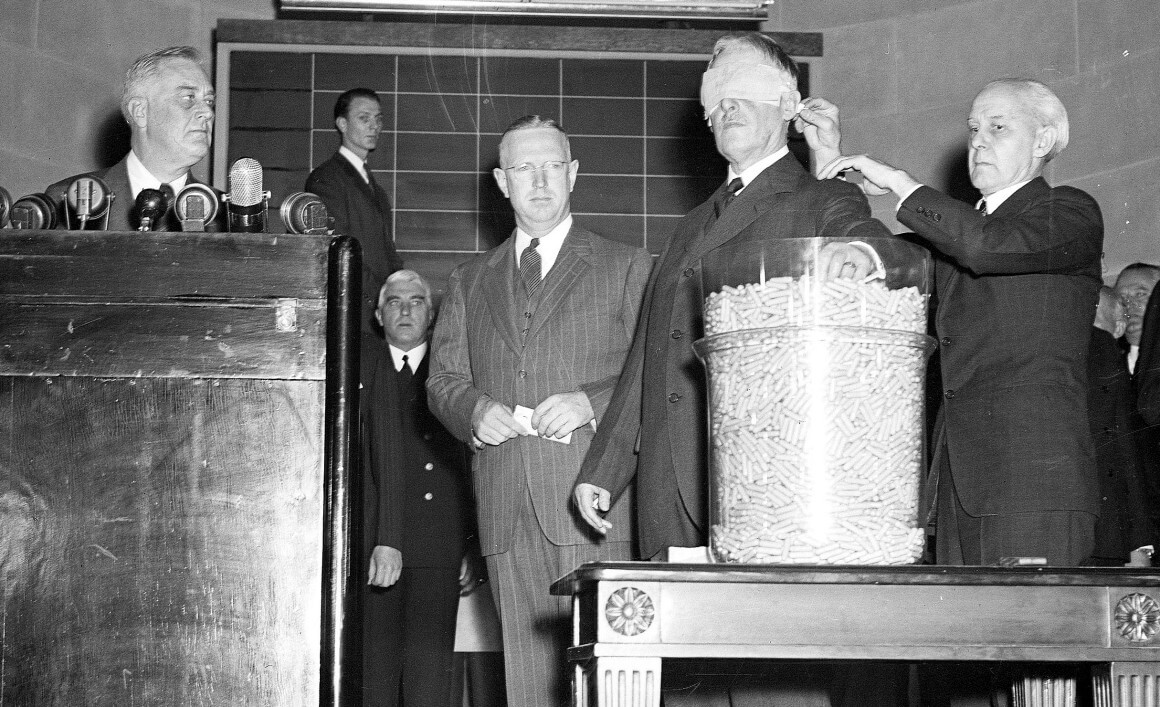
Image courtesy of Library of Congress in Washington, DC showing Secretary of War Henry Stimson drawing the first number for Draft in 1940 for World War II
The first number drawn of the 7,836 serial numbers that were printed on paper and placed in individual capsules was No. 158. This number belonged to Harry Robert Bell, a 21-year-old from Washington D.C. (see image below). The hundreds of men across the United States pulled in this first drawing were all given an order number of 1.
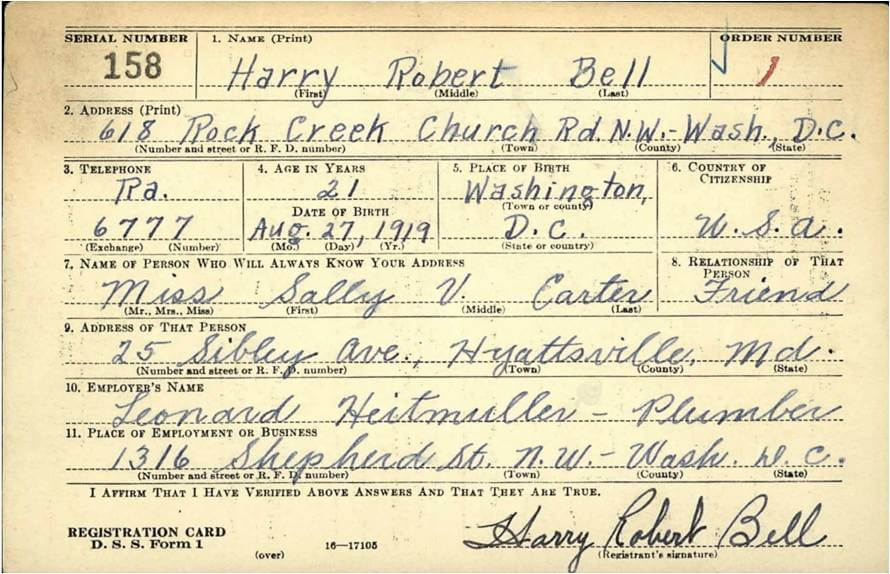
Harry Robert Bell-WWII Draft Card-First Person Drafted
World War II Draft Registration Cards
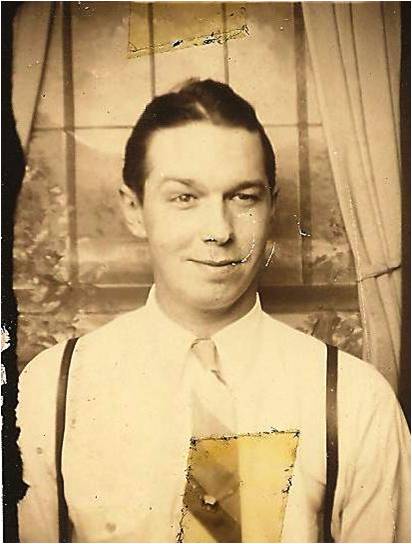
Edgar L. Strauss (photo courtesy of Michael Strauss)
Genealogists can determine which of the seven draft registrations cards their ancestors filled out by noting the letters that were placed in front of the serial numbers for five of the seven registrations:
- 2nd registration is preceded by an “S”
- 3rd registration is preceded by a “T”
- 4th registration (or Old Man’s Draft) is preceded by a “U”
- 5th registration is preceded by an “N”
- 6th registration is preceded by a “W”
Only the 1st and 7th were not lettered before the numbering system.
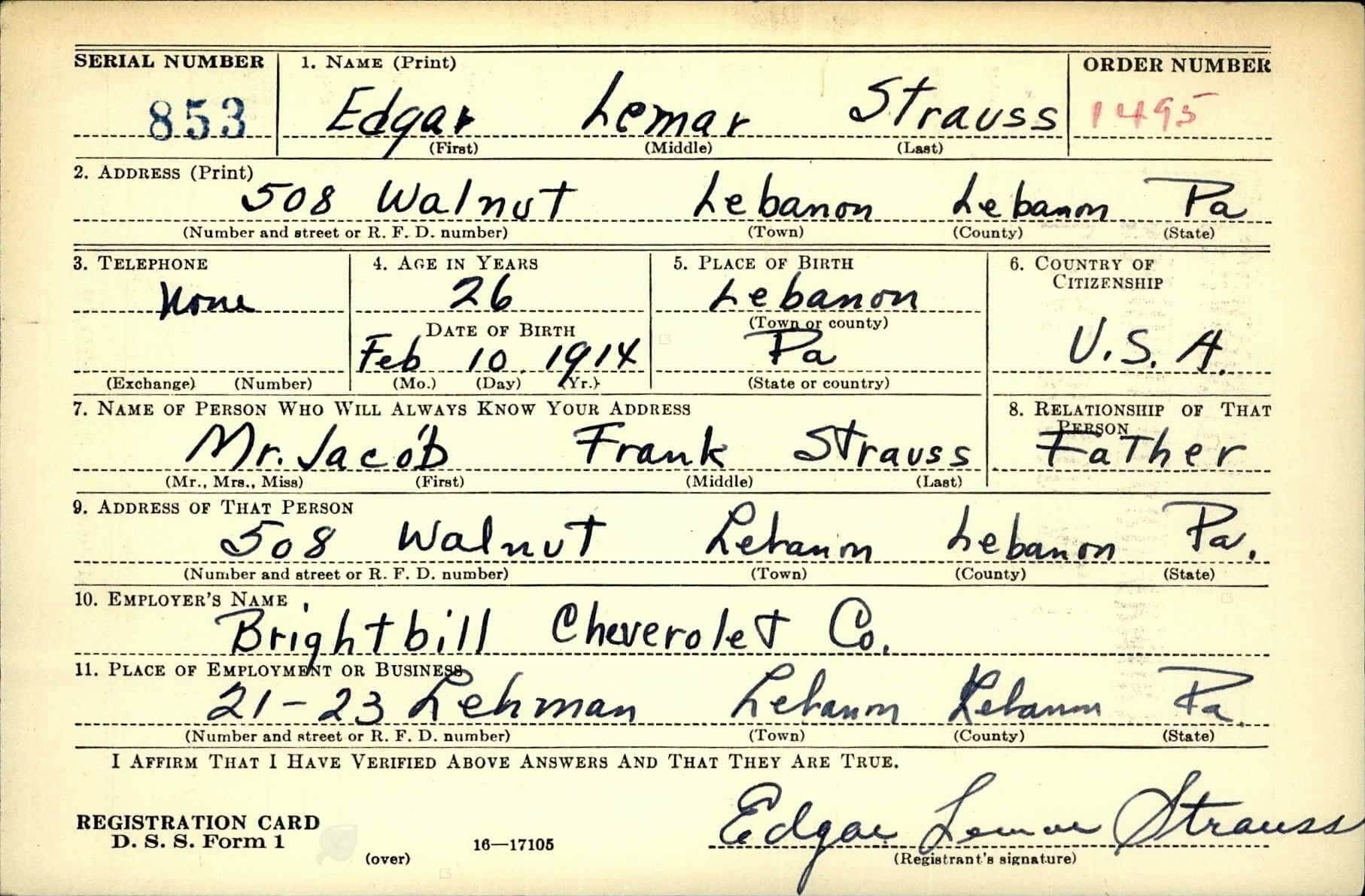
Edgar L. Strauss-WWII Draft Card (image courtesy of Michael Strauss)
On the back of the card is stamped the local draft board number and location where the registrant went to fill out the form. These were cataloged nearly the same way as the previous war with the State, District Number, and local Board. The National Archives in College Park, MD has a master list of all the draft board numbers and locations alphabetically by state and territory.
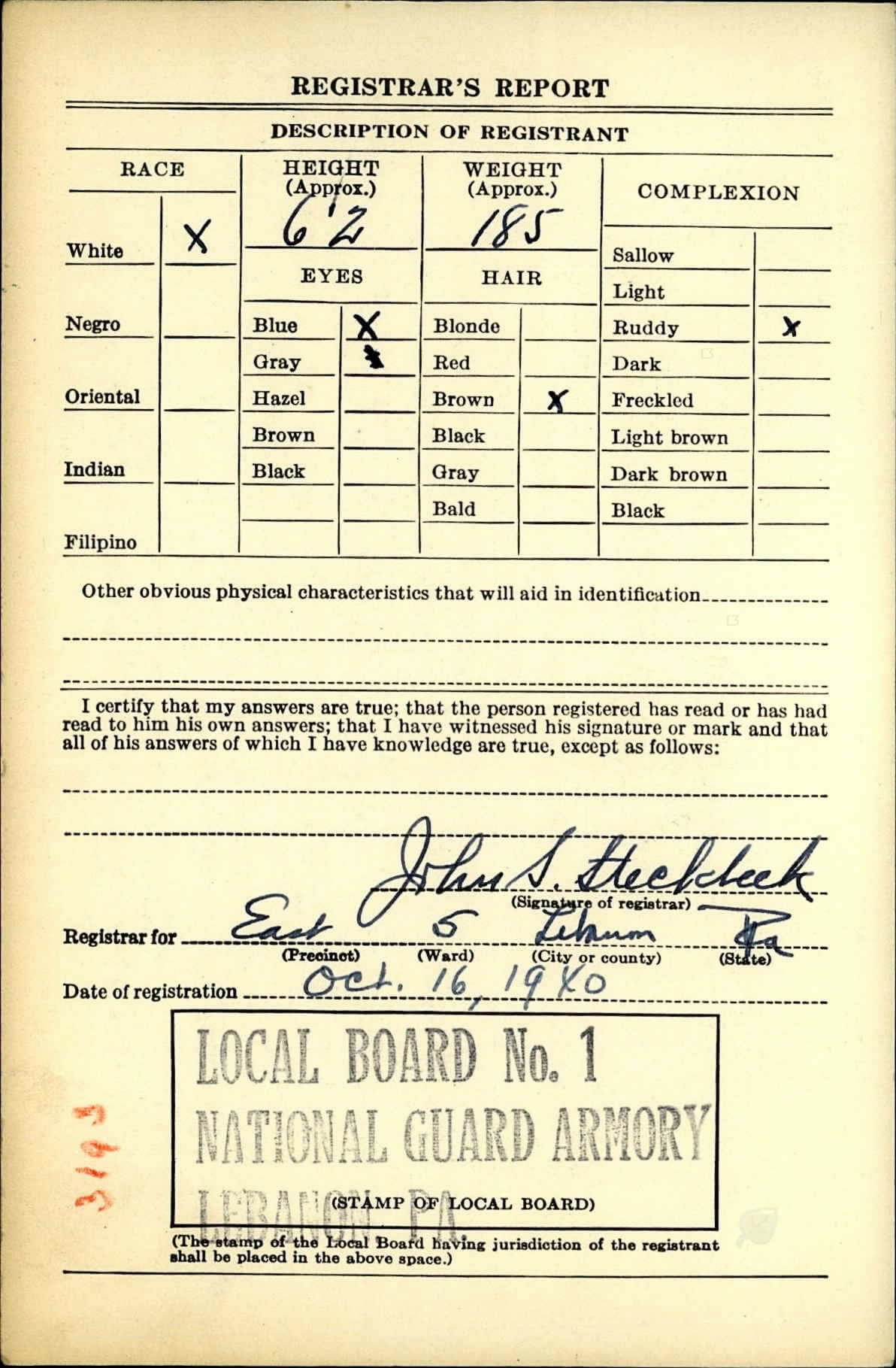
Edgar L. Strauss-WWII Draft Card-Back (Image courtesy of Michael Strauss)
Contact the National Personnel Record Center in St. Louis, MO to obtain copies of the Draft Classifications for World War II and subsequent periods, and dockets to determine the status. During World War II, draft classifications were listed using first a “Roman Numeral and then a Letter” giving the status of each registrant.
Some of the more common Classifications included:
- I-A Fit for military service (could be inducted into service)
- II-B Deferred necessary to National Defense
- III-A Service deferred to hardship/Dependents
- III-B Occupation vital to War Effort
- IV-D Minister of religion
- IV-E Conscientious Objector
- IV-F Rejected For Military Service
Image above: WWII Draft Classification List including Edgar L Strauss – Order #1495. (Courtesy of Michael Strauss)
For a complete listing of all of the classifications for World War I through World War II and including post-war service for the Vietnam and Korean warm, contact the college at Swarthmore University in Pennsylvania. They have recorded each of the listings along with explanations. Once this is done, contact the Archives in College Park, MD to obtain other Selective Service records. All records are part of Records Group 147.
 Resources for Learning More About World War I and Military History
Resources for Learning More About World War I and Military History
Move backward in time from World War II to the Great War with Michael’s article Deciphering Draft Registration Cards for Genealogy: World War I.
Then, click the image on the right to head to our comprehensive collection of articles on military history.

Author: Michael Strauss, AG
Michael Strauss, AG is the principal owner of Genealogy Research Network and an Accredited Genealogist since 1995. He is a native of Pennsylvania and a resident of Utah and has been an avid genealogist for more than 30 years. Strauss holds a BA in History and is a United States Coast Guard veteran.

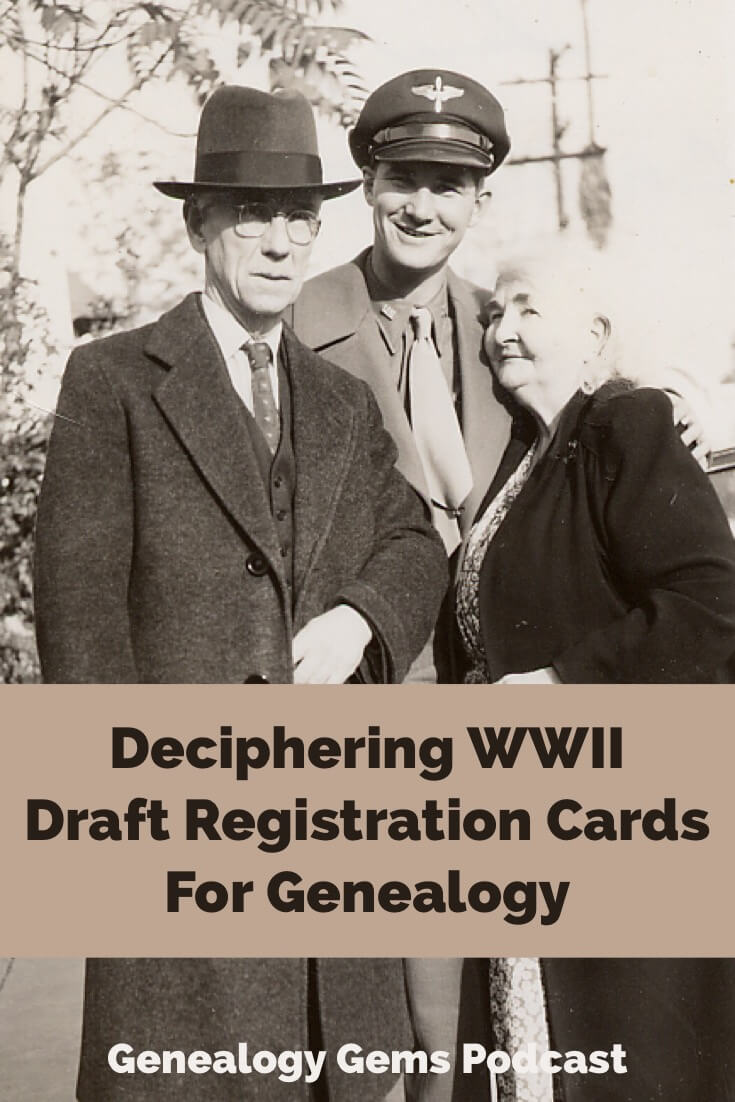
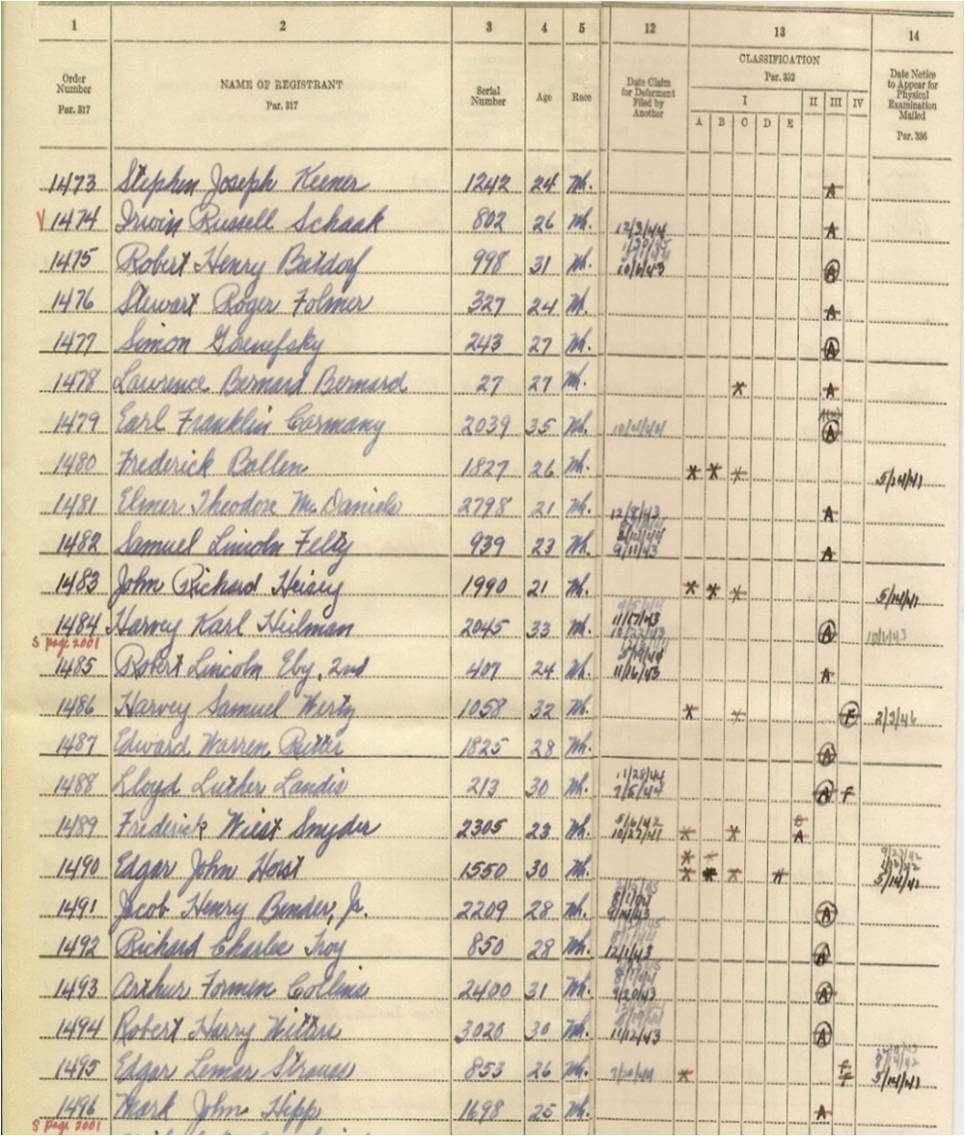
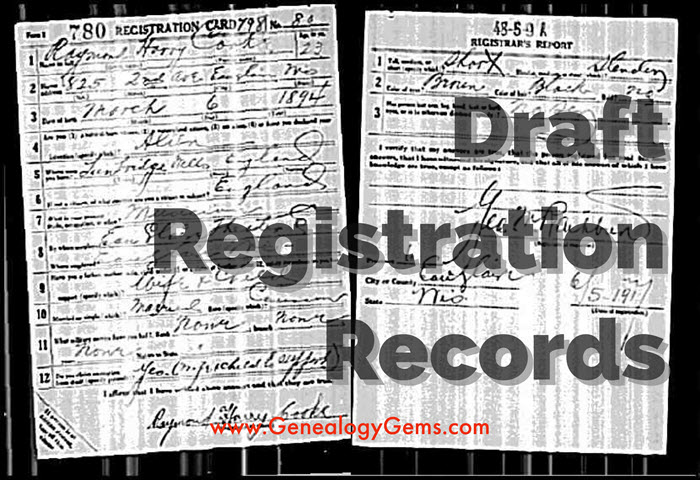
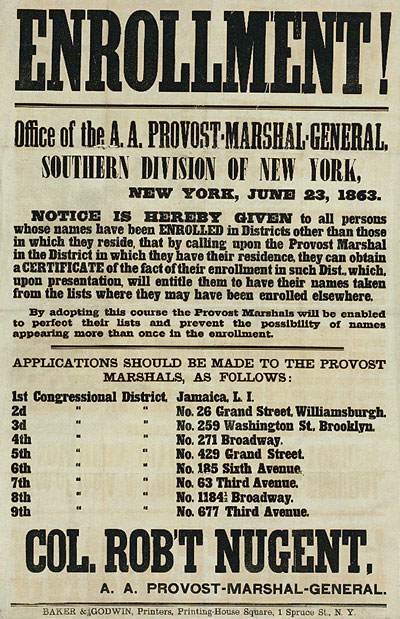
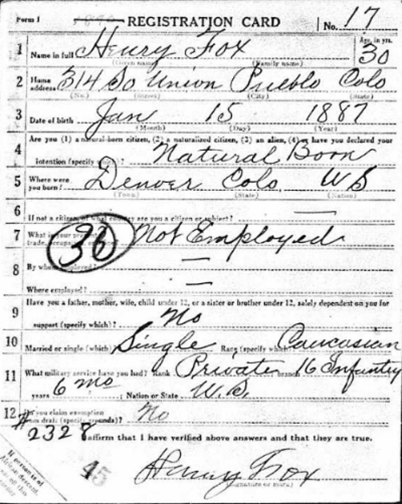
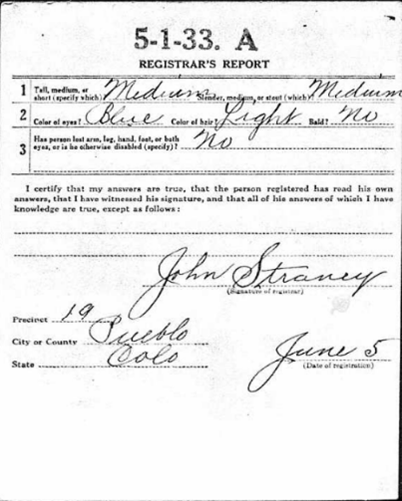
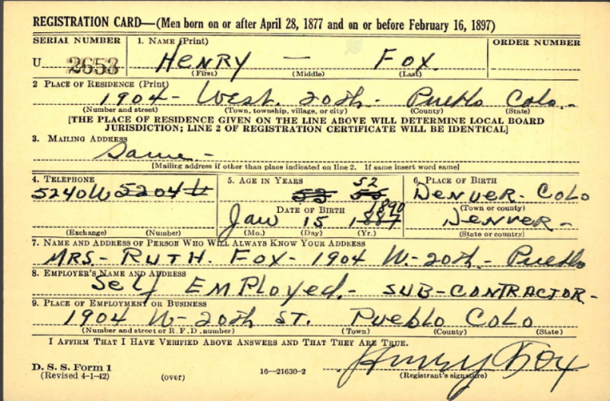
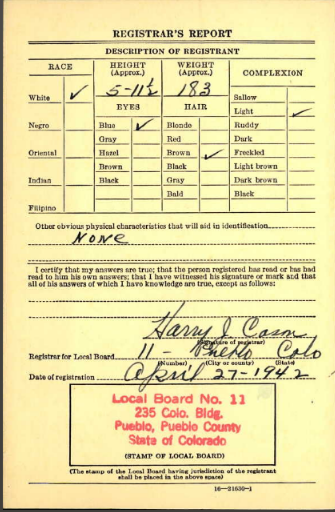
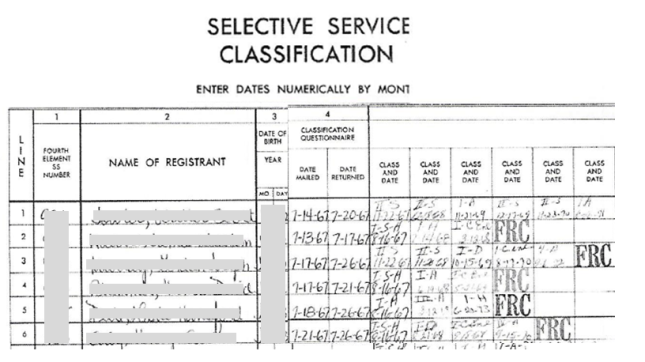
 Michael L. Strauss contributes the new Military Minutes segment on the Genealogy Gems Podcast. Listen to this segment in the free
Michael L. Strauss contributes the new Military Minutes segment on the Genealogy Gems Podcast. Listen to this segment in the free 


